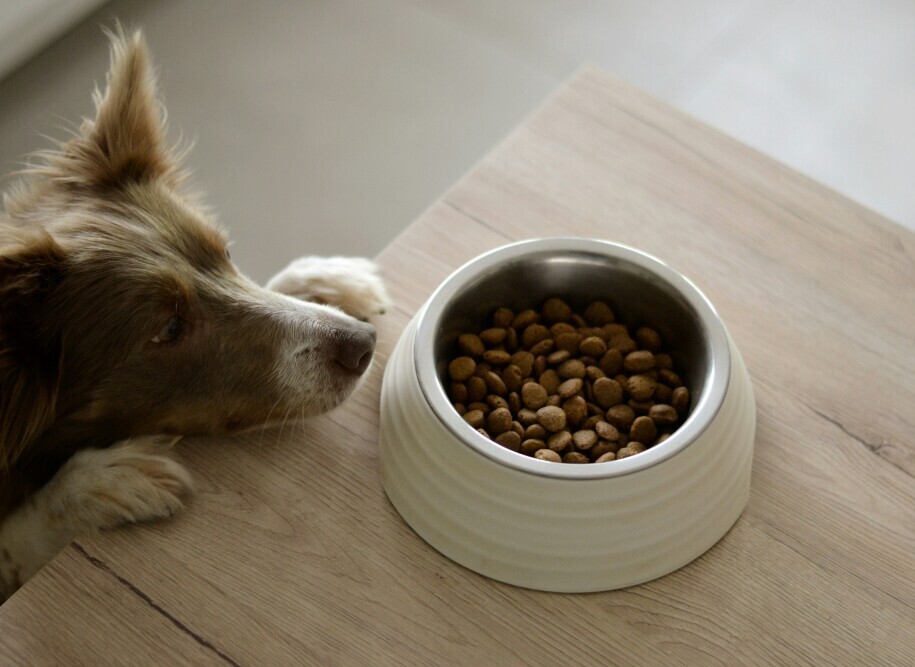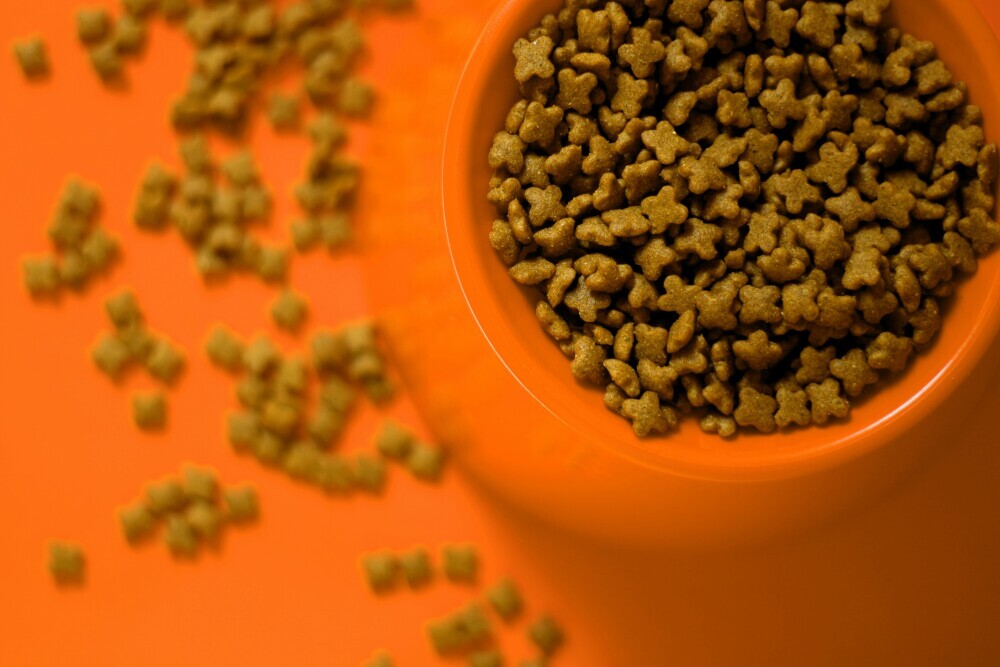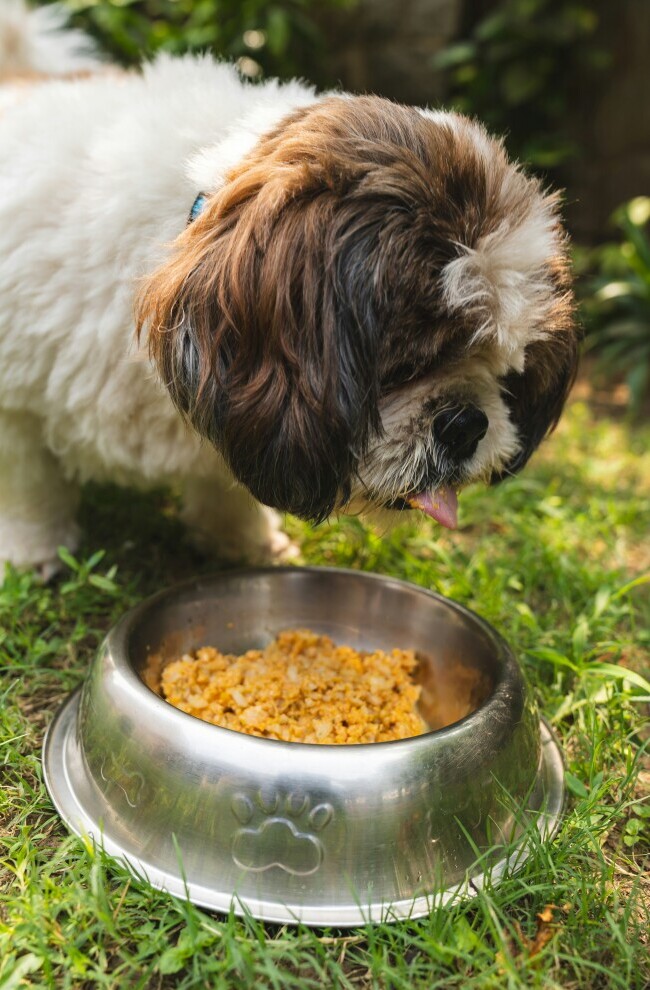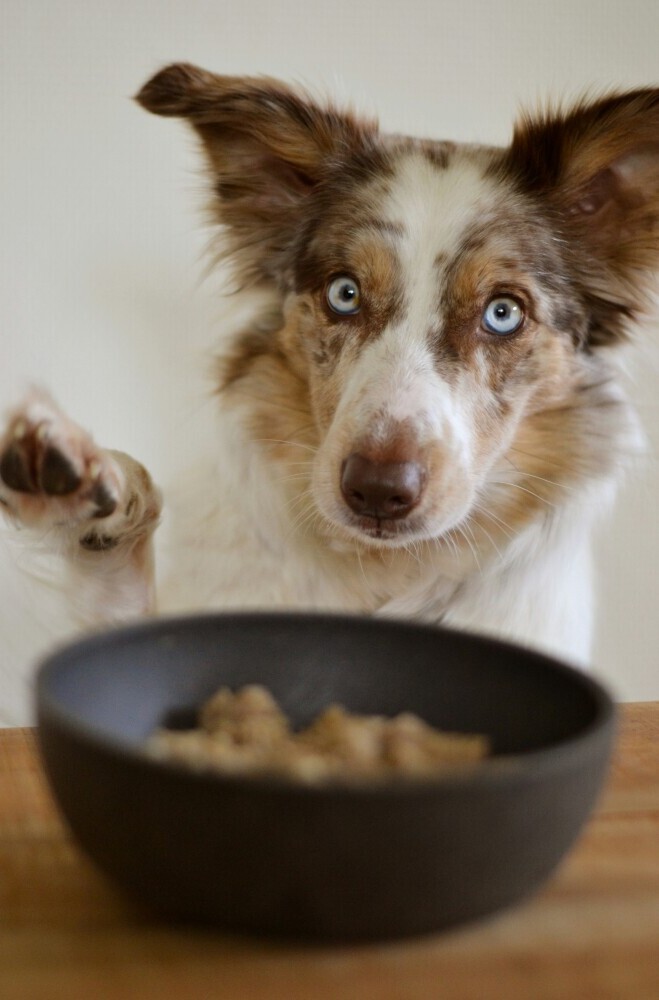
A few of the links in this post are affiliate links. If you buy something, we may earn a small commission (no extra bones from your wallet 🐾). Thanks for helping support the site and all of the dog adventures!
Changing your dog’s diet isn’t just as simple as swapping out the old chow for the new. It’s about ensuring their overall health and wellbeing. Diet plays a crucial role in keeping your furry friend happy and energetic.
A good diet means a shiny coat, a healthy weight, and lots of tail wagging. We want you to give your dog the best food to keep them at their best, so here are a few tips for switching your dog’s food to make for a smooth transition.
Making an abrupt switch in a dog’s food can cause a few bumps, like digestive issues or allergies. That’s why sudden changes are a no-go. Dogs might end up with stomach problems or even refuse to eat if the new food doesn’t sit well.
So, it’s not just about a picky eater, but about genuine health risks. You don’t want to risk their health or make them sick, so you need to approach this change with care.
Keeping an eye on your pup’s reaction to different foods helps spot issues early on. Symptoms like itching, diarrhea, or fatigue might signal something’s off. Knowing these red flags helps in adjusting their meals to better suit their unique needs.
When you start them on a new diet, watch for any changes in their behavior. Make sure after they eat that they aren’t displaying any signs of these symptoms.
By slowly bringing new foods into the mix, you’re setting your dog up for a healthier lifestyle. Long-term, a balanced diet reduces the risk of diseases, helps with weight management, and contributes to a longer, happier life.
It’s not just food; it’s the foundation of your dog’s daily life. So you’ll want to give them the best food possible for their peak health. So let’s get started with how to make the switch for the best results.
Switching diets safely is key for every life stage. Learn the fundamentals in Dog Nutrition 101: Feeding for Every Life Stage.

Consultation and Preparation: The First Step
Jumping into a new dog diet without a plan? Not the best move. Chatting with a vet first is like having a roadmap. They know your dog’s health history and can help decide what foods might work best.
Keep this in mind especially if your dog has specific allergies or special conditions that may require certain types of food. Your vet can give you the best course of action when it comes to getting your dog’s new food.
Every dog is different, so their diet should be too. Consider age, breed, or any health quirks when picking new food. For example, what’s great for a young, bouncy pup might not cut it for a senior dog with a sensitive gut. So not only are you paying attention to the brand of food, but also the age group and special needs that it is designed for.
Setting a timeline for the switch keeps things smooth. Talk timeframes that suit your dog’s needs, often around a week or more for cautious canines. Rushing it is tempting, but slow and steady wins the coat-shine race. Introduce the new food slowly and gradually, rather than springing it on them all at once.
Feeding guidelines can feel like a secret code, but they’re your friend. Measuring portions helps avoid surprises on the scale, ensuring your dog gets just what they need without overdoing it. If you can do this transition the right way, it can go smoothly without any problems or risking your dog getting sick.
Diet transitions affect digestion and overall health. See how in our Dog Health and Wellness Guide.

Slow and Steady: The Gradual Transition Process
Switching your dog’s food step-by-step helps avoid tummy troubles. Think of it as a friendship, starting with small introductions before jumping in fully. You can start by slowly mixing in the new food with the old food, so that their system has time to adjust to their new diet.
Mix the new food with the old one, increasing the new stuff while decreasing the old over a week. Start with around 25% new to 75% old for a couple of days, then slowly tip the scales. Over the course of a week or so you should be able to make a complete switch to their new food.
Watch how they handle it. Any signs of discomfort like gas or loose stools? Slow it down a bit. Rock the pace that keeps them wagging happily. Pay attention to any signs of sickness, especially after mealtimes. If your dog is vomiting or having diarrhea, it may mean that the food is not sitting well with their stomach.
During meal-times, keep an eye out. Make sure your pooch is eating the mix without a fuss. Some might pick out the new bits, so mixing well is key. If your dog won’t touch the new food, this may mean that there is something that doesn’t resonate with them about it.
If things go south and your pup isn’t adjusting, it’s alright to pause and rethink. Backing off to their old food might be necessary, giving their tummy a little R&R before trying again. This doesn’t mean that they can’t switch, but that you may need to extend the timeline to get them and their bodies used to the new diet.
Some behavior issues, like picky eating or food guarding, are linked to diet. Find solutions in Common Dog Behavior Problems and How to Fix Them.

On Firm Ground: Monitoring and Adjustments
Monitoring your dog’s reaction to their new diet is crucial. Be the detective, not just the chef, making sure they’re thriving on the switch. Every meal offers clues to how well it’s working. After increasing the amount of the new food after a few days, your dog should be becoming used to their diet.
Adjust portion sizes as needed. Your furball’s energy levels and weight changes are good indicators—a little more if they seem sluggish, less if they’re packing on pounds.
If odd reactions like itching or changes in bathroom breaks appear, it might mean switching things up. Be ready to tweak the plan or consult with your vet for advice. Be aware of any allergies that your breed may have to particular foods.
Reading dog food labels helps understand what your buddy is chowing down. Plenty of info there can guide you in fine-tuning their meals, ensuring they’re getting premium nutrition. Knowing what ingredients your dog can and can’t handle will help guide you to the right food for them.
Older dogs often need gradual adjustments to prevent stomach upset. Explore tips in the Complete Guide to Caring for Senior Dogs.

Beyond the Basics: Ensuring Long-term Diet Success
Keeping up with regular vet check-ups is part of the healthy diet package. It helps tweak any diet changes and keeps them in tip-top shape. Especially if your dog doesn’t seem to want to change, or if the new food is causing health problems, you may want to consult your vet to see if there’s something deeper going on.
Balance in diet includes the occasional treat, because who doesn’t love a reward? Just keep them in moderation so they aren’t spoiling dinner. Make sure that the treats are healthy and that they don’t substitute for a balanced meal like from their kibble.
Life stages demand different nutritional needs. Pups, adults, and senior dogs all have different demands, so their diet should grow with them. Active dogs might chow down more than the couch potatoes. Adjusting and personalizing their diets fits into their lifestyle without tipping scales.
We hope now you are battle ready to switch your dog’s diet and prepared for any issues may arise. Just remember to change the food gradually, and keep an eye on them for any changes in behavior or health. After a little time, your dog should be at its best peak health from eating the best possible food you can give.
